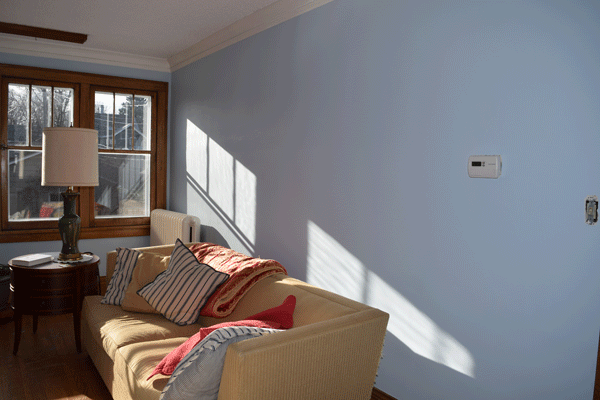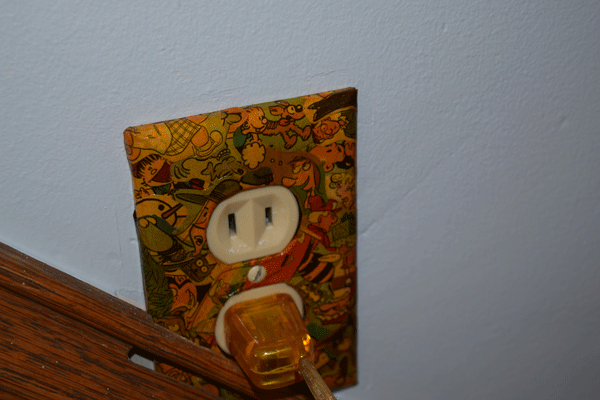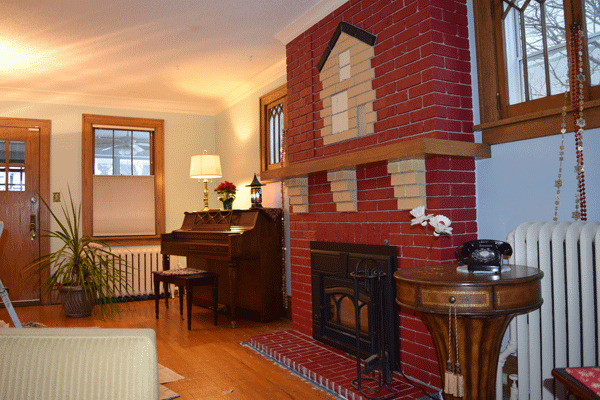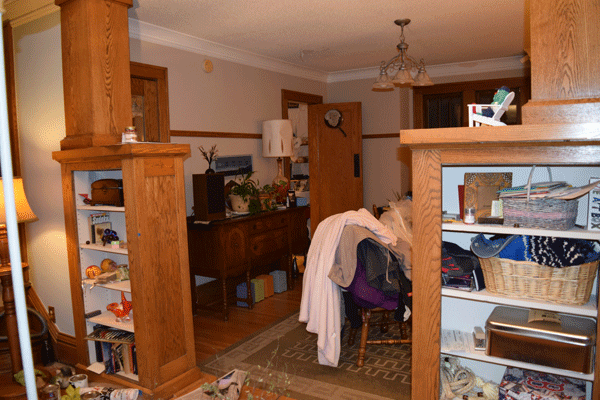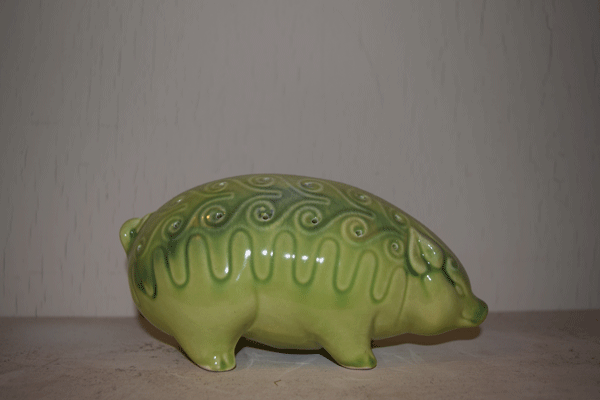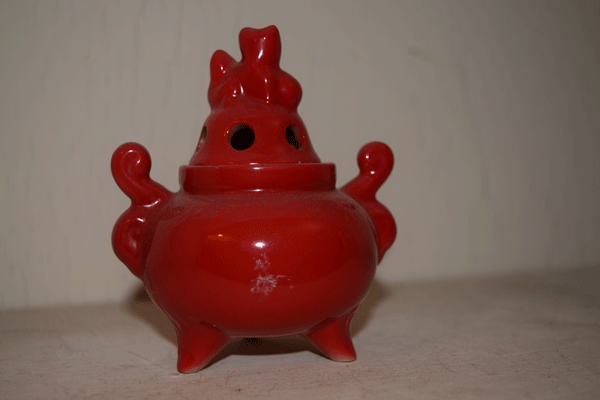There was a lot of angst over choosing a new wood stove insert. To keep the larger stoves in play, we entertained alterations to the hearth and the height of the mantel; this gave the salesman the idea that I might be a prepper.
“Maximum capacity is a thing with them.” He said.
Worse than being outed as a screwball who believed that a complete economic collapse was possible within my lifetime, ruling nothing out added to the stress of making an expensive purchase that was expected to last forever.
When no one else could, the guy who came out to take the official measurements convinced me that it was possible to go too big. He regretted making the same mistake when he installed a new stove at his cabin on Lake Superior.
“It’s impossible to regulate the heat.” He told me as he sized up my living room. “Once it’s 90 degrees in here, it’s 90 degrees.”
But even after narrowing our choices down to two stoves, I was torn between giving up what I simply preferred and giving up 200 extra square feet in heating capacity. And while the stakes were low — to believe the salesman, we couldn’t go wrong — it was helpful to acknowledge that choosing one thing meant that I could not have the other thing. This is obvious. Nevertheless, noticing the fear, the cause of my indecision, aimed to quell it.
It felt good to put down the deposit and to know that we weren’t doomed to drag things out with false objections and the endless weighing of pros and cons. If we’d be met with buyer’s remorse, it would be a fluke with lessons that needed to be learned from direct experience; it would be life. It wouldn’t be for carelessness that we might somehow end up disappointed. “So enjoy it!” I kept telling myself. To celebrate, we followed a sign and ended up at an odd little place that served breakfast in seven tiny courses.
But still, I can kick myself over something as little as a failed 15-dollar purchase, a tortilla press to be exact. The selection at the mercado in Powderhorn was slim. I settled for a plastic model that had a grip that suited me and somehow seemed sturdier than the metal presses with their loose hinges. Once home, imitating a YouTube video, I promptly cranked down on the handle to achieve the desired paper-thin dough and snapped the sucker off. While it rankled me to be out the cash, chucking the broken press into the trash within hours of buying it seemed criminal, although I wasn’t sure where to place the blame. A mistake so easily corrected, Brian couldn’t be bothered with it. I, on the other hand, hail from the camp of there-ought-to-be-a-law, as in: “There ought to be a law against manufacturing junk!”
I had always been charmed by the fireplace and recall the house blocked out with a few bricks coming into focus for the first time. “Oh, there’s a house.” I said standing there in my socks and down coat. “Cute.” The realtor piped in from where he sat at the head of the dining room table to tell me that no one else had ever noticed it. While I didn’t care that the fireplace had been painted white, others — certain friends, the plumber — were easy to pronounce it an atrocity that spoiled the integrity of the old house. Their revulsion stirred my insecurities.
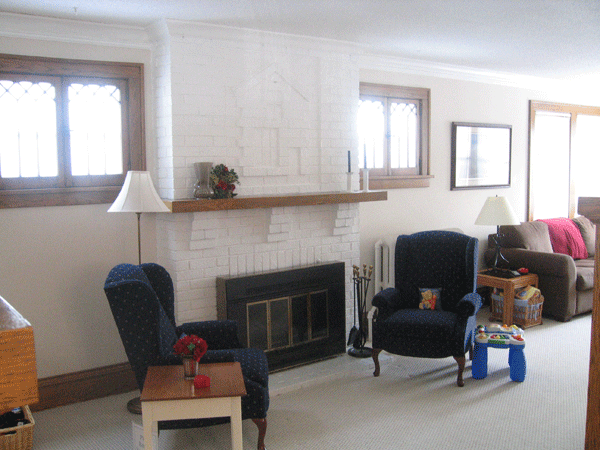
“We didn’t paint it.” I would say instead of checking my unsolicited critics. “It was that way when we bought the house.”
“Hideous!” the chorus would answer. “You should take it down to the natural brick!”
A quick Internet search suggested that it was unlikely that any of these assholes had ever tried to remove paint from brick. Still, I could imagine that the fireplace might look dingy next to the new stove. I wasn’t sure how, but I suspected that it could be better. So I consulted with a professional colorist.
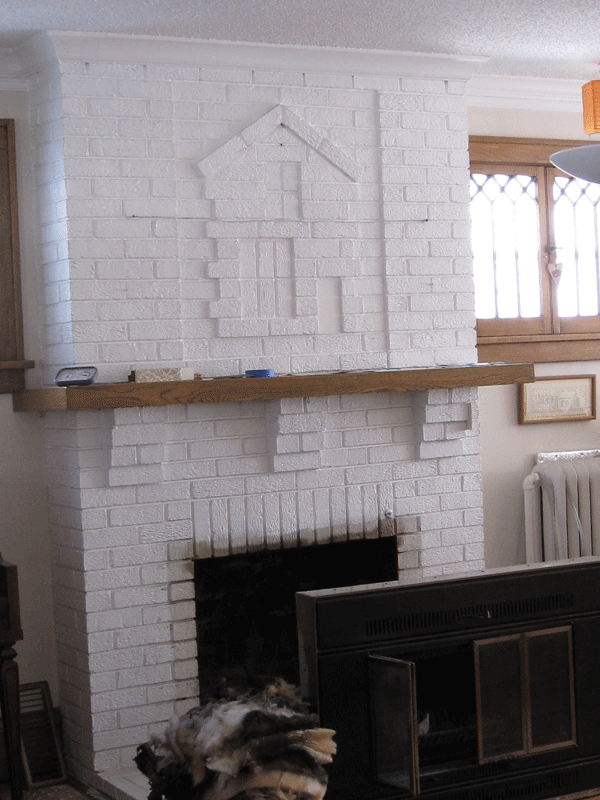
Staring up at the fireplace that by now was covered with a gray primer, I asked Brian if he missed the white and he admitted that he kind of did.
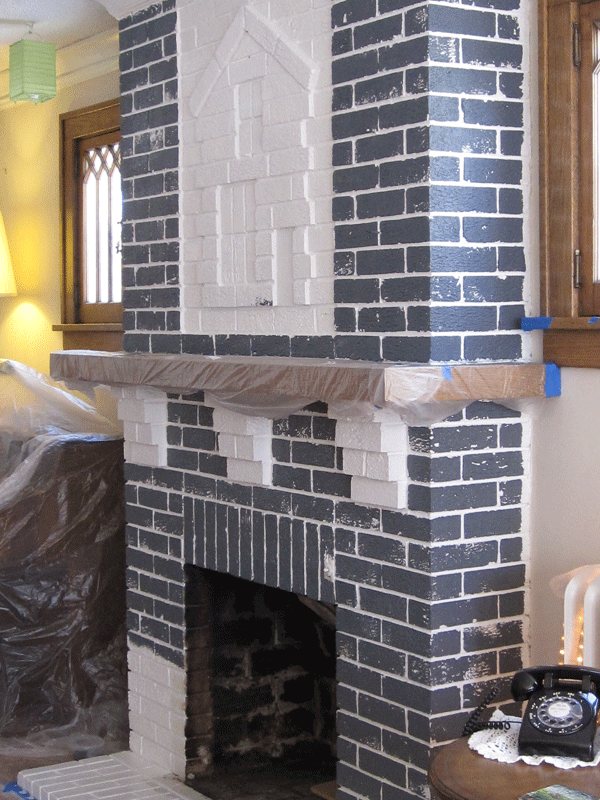
The following week, I called Brian to warn him that his living room was starting to feel like the lobby of a McDonald’s. But he saw promise and favored sticking to the plan.
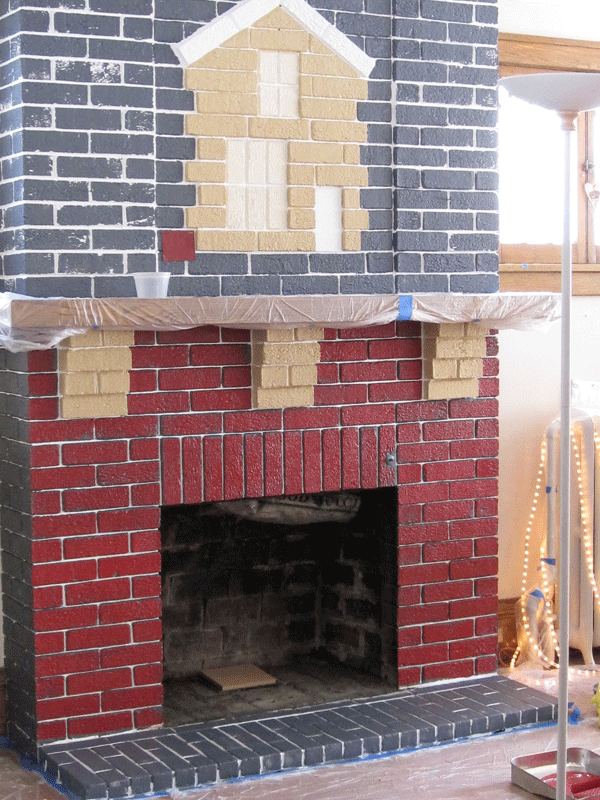
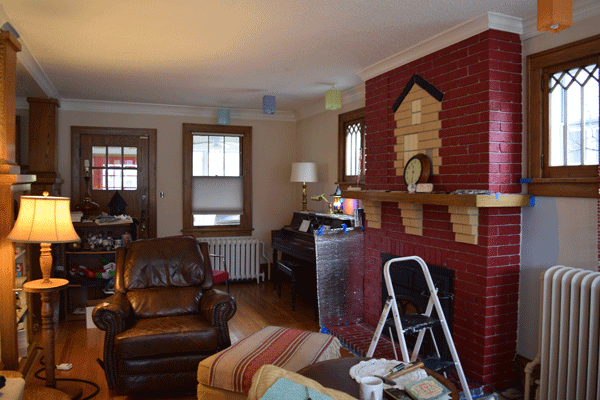
When my mom saw our new red fireplace, she was reminded of the cardboard one we used to set up at Christmas time when I was a kid. Here I am posing in front of it with our dog Rusty. Notice the stockings. There are seven. Seven? Six kids. Mom and Dad. Eight! I count eight!
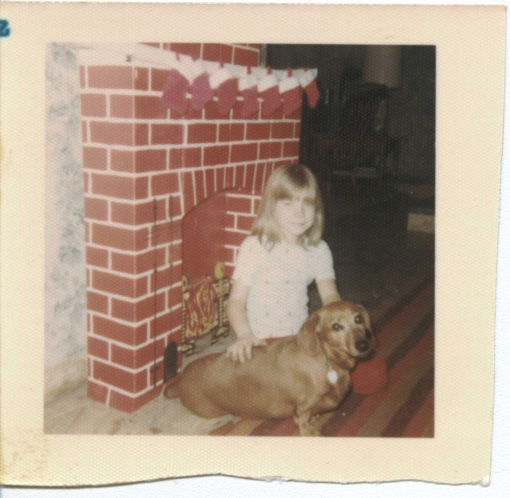
And then came the walls. After finishing one side of the room with “Balmy”, a color from Sherwin Williams, I would swear that I loved it and would marvel at how beautifully it showed the woodwork. Then I couldn’t tell or sometimes I just felt like I was in someone else’s house and I wasn’t sure I liked that so much.

Hey, lady! It’s just paint!
I know.
And then I noticed a cup of ice in a photo, one of the before shots.
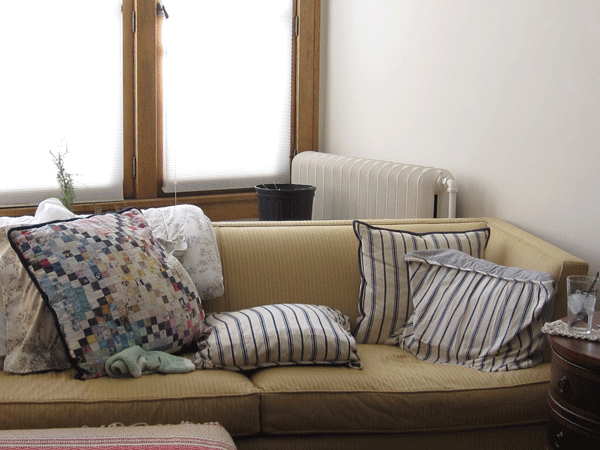
The photo was a haunting reminder of a time when I couldn’t be without my cup of ice. It reminds me of how Brian would wait for me to fish out the last cube before getting out of the car, patient no matter the weather and regardless of the thing that needed doing. After years of a crawling decline, so slow that it would redefine normal, I found out that my addiction was a common symptom of chronic anemia. So seeing that cup of ice reminds me of a time when I couldn’t carry a load of laundry up two flights without losing my breath. I thought I was out of shape. I thought it was age. It reminds me of the lawn mowers that hummed outside my window. “You can’t do that!” They taunted. It reminds me of being torn over invitations, only to have my skipping rare gatherings affirmed by yet another ruined pair of pants. Getting to the bottom of the problem was scary and full of decision points that can put the biggest of choices into perspective let alone the color of paint.
Realizing that “it’s just paint” isn’t necessarily going to make me a more decisive person overnight. But as a second-guesser, an apologizer and worrier, I am starting to see the value of determining the gravity of a decision before applying a blanket worst-case scenario and giving my emotional well-being over to the whims of a tyrant. For example, I recall having a tough time proceeding with repairing a window because I was afraid that I’d break the glass. I mentioned this to a friend who asked, “What’s the worst that could happen?”
I’ll break it!
“Say, you break it. You’ll take some measurements and buy a replacement piece.” He made it sound so simple. I had been stuck for no reason. Sometimes this is clear. Sometimes it isn’t.
Even if I couldn’t bare to lose the antique glass with its imperfections that soften the southern light, casting wavy shadows on the walls and floors, it wouldn’t be impossible to harvest it from salvage shops or even from the alleys next to trash bins or from the random curb side. Sheets of college ruled paper hastily yanked from spiral notebooks are routinely slapped on these masterpieces with two dabs of masking tape; a semi-dry Sharpee barely manages: FREE!!!
